OMD drummer Mal Holmes has been musically associated with founder members Andy McCluskey and Paul Humphreys since THE ID.
The Wirral post-punk band showcased songs such as ‘Electricity’, ‘Red Frame/White Light’, ‘Julia’s Song’, ‘The Misunderstanding’ and ‘Radio Waves’ that were to later become part of synthpop folklore. When THE ID split in 1978, Holmes continued to drum for local bands and worked as burger chef during the day. Meanwhile McCluskey and Humphreys formed OMD, releasing ‘Electricity’ on Factory Records in 1979…the rest is as they say, is history. But it was while supporting Gary Numan as a duo accompanied by Winston the TEAC tape recorder that the limitations of employing such a rigid backing track in live performance became apparent.
So expanding to a quartet for a club tour in early 1980, DALEK I LOVE YOU’s keyboardist Dave Hughes and Mal Holmes were recruited. Almost instantaneously, there was a looser, more frantic feel to OMD’s live sound with Holmes’ crunchy electronic percussion and sparing live drums providing a particularly unique aural framework. Holmes had already guested on the recorded version of ‘Julia’s Song’ from the OMITD album but eventually became a studio regular, contributing to OMD’s first hit ‘Messages’ before playing on the Organisation album featuring ‘Enola Gay’.
Around this time, Dave Hughes left OMD to form GODOT so another guest musician from the debut album, saxophonist Martin Cooper joined to play synthesizers to complete the now classic OMD line-up which later went on to enormous success with the album ‘Architecture & Morality’ in 1981.
Holmes’ sharp, complimentary drumming style which mixed acoustic and electronic percussion over tight pre-programmed rhythms helped the unlikely commercial proposition of Maid Of Orleans become the biggest selling single of 1982 in Germany.
Rewarded with equity for his loyal service to OMD from 1983’s ‘Dazzle Ships’, ironically he played on only three of its tracks while the album itself was a commercial flop, only gaining artistic recognition in later years.
Although OMD started to adapt a more conventional sound from 1984 with Holmes having a greater role in the albums ‘Junk Culture’, ‘Crush’ and ‘The Pacific Age’ that followed, strained relations following their American success led to the classic line-up splitting with Holmes joining Humphreys and Cooper in THE LISTENING POOL who released their only album ‘Still Life’ in 1994 and McCluskey continuing solo as OMD.
The classic OMD line-up reunited for a successful tour in 2007 which has led to the release of a new album History Of Modern, supported by an Autumn tour which sees OMD’s position as synthesizer pioneers reinforced by their choice of new OMD influenced acts VILLA NAH and MIRRORS as support.
Always a favourite of the fans, a banner at a gig once proclaimed “MAL IS GOD!” – just before the soundcheck for the opening show in Brighton, Mal Holmes spoke to ELECTRICITYCLUB.CO.UK to give an interesting insight into being a drummer in an electronic pop band and the artistic conundrums that it throws up…
On the earlier OMD tours, you played what always looked like a drum kit that had bits of it nicked on the way to the gig. How into the electronic ethos were you, especially as Paul and Andy wanted their percussive framework to be as anti-rock as possible?
I was playing before with them in THE ID as your regular rock drummer. I was really a drummer’s drummer at that time; I loved Billy Cobham, Phil Collins in GENESIS, Richie Hayward out of LITTLE FEAT. So when I first joined OMD, I’d been coming from THE ID so we were playing Electricity and some of those early songs on a regular kit which my bother bought me when I was 16, this Tama kit. THE ID spilt up, OMD get together and it must have been about 6-10 months before I came back in.
It was clear they were into that KRAFTWERK electronic vibe. Paul Collister, the manager was an electronics boffin with Paul Humphreys being at Riversdale College in Liverpool doing it as well. The idea was we wouldn’t have a regular drum kit, we would have an electronic drum kit but you couldn’t go to the shop and buy one, there was nothing around. So I was really excited I was going to have a new kit that nobody would have seen built by Paul Collister and Paul Humphreys. I remember I was a roadie for the band before I joined and I was hanging out with them with the view of going on the road with this new electronic drum kit.
This drum kit never took shape basically, I remember pushing Paul Collister saying “you’re building this thing, so what is it?” and he’d go “oh, I’ve got to get the circuit boards, I’ve got to the get transistors, I’ve got to get the pads…” – so eventually, a couple of days before we go on the road, Paul Collister comes up with this electronic drum kit that he’s made which is a couple of practice pads with crystal microphones inside and leads to circuit boards for snare and hi-hat etc.
There was a kick drum that was hacked together which was like an ‘on-off’ switch and a foot pedal!! So we rehearsed and we took it out for the first show and it was clear that it wasn’t going to work… everything was moving round the stage!! I’d press the kick drum and before I knew it, it was two yards in front of me! I’d hit the snare drum and it wasn’t triggering!! I hit the crystal microphone inside the pad and smashed it to bits, it just wasn’t going to work! *laughs*
So what happened next?
What had to be done was I needed to bring in from my old kit, the kick drum, the snare drum and the hi-hat. That then became the basis of my kit to this day actually! The other stuff like the ‘white noise’ pads stayed with us because they weren’t being used so much through the set and they couldn’t stick constant hitting like the real hi-hat could do. I just complimented what was going on with the ’white noise’.
I did embrace the electronic kit, I loved the idea of playing that but the functionality of it and playing it, the original one we had in OMD just couldn’t handle what was going to happen when we were taking it on the road. So two or three days into the tour, that’s when it became a hybrid. But I wasn’t allowed cymbals, they were a complete no-no! We didn’t use any cymbals until ‘Crush’! So many people like the road crew said “I don’t know what’s wrong with your drum kit but it looks really different! NO CYMBALS, THAT’S IT!”
How did you respond to the challenge of playing along to pre-programmed backing tracks as opposed to going first and leading a song the way a traditional drummer does?
It didn’t bother me, I embraced it more than anything else because around that time just after THE ID, DALEK I LOVE YOU were coming up on the scene and I did a few sessions with them. It was clear that the beatbox started being a major part of what was going on musically with drummers in the North where I was anyway. I didn’t batter an eyelid, I thought it was natural progression as to where we were going to be going.
I just fell into that path really and it set me off in a different direction. If I hadn’t taken that path, with the electronics and the drum machines, and being a real drummer’s drummer lover, I would have gone in a completely different direction with the way I play. Now, I’m pretty happy with what I do, I’ve got my own style. The electronic side has laid down the foundations of what I actually became as a drummer.
In the early days, it was Andy and Paul who did the rhythm programming. When did you first actually get to do drum machine programming on an OMD recording?
I didn’t do a lot of programming of drum machines really. First time anything was written in the drum department was in THE ID so the first time ‘Electricity’ was ever played to my knowledge, it was me playing it on a kit when we came in as a seven piece. And the same for some of the songs that went onto the first album.
For ‘Organisation’ on ‘Enola Gay’, it was me playing on top of Andy’s beatbox and then we moved onto ‘Architecture and Morality’, the guys had The Gramophone Suite studio. I was listening to BRIAN ENO so the likes of ‘Maid Of Orleans’ came about because of a track that Phil Collins played on in this little skippy 6/8 beat, it’s really light!
Yes, Back In Judy’s Jungle from ‘Taking Tiger Mountain (By Strategy)’? The song’s got also that almost pentatonic instrumental line that has a similar feel to ‘Maid Of Orleans’… it’s from a Korean folk song!
There you go! That’s where my original idea for it came from. With ‘She’s Leaving’, we got hold of some Pearl syndrums and we were all messing around in the control room with little white noises and stuff like that. The majority of the drum programming would always be done by Andy or Paul. My part would be to lay down on that. I did some Linn Drum programming on ‘Junk Culture’ but it was mostly playing on top of the Fairlight and the Linn Drum.
You’re credited with ‘bass synthesizer’ on ‘Architecture & Morality’, can you remember what you did?
Really? I think I did and I think it was… God, there you go! *laughs*
I think it was something incredibly simple, a bass drone or something like that! It was on a Roland SH2 and I wouldn’t have a clue what track it was! I know it’s a really small part and I said something like “C’mon, I want to play keyboards on this”, and Andy or Paul would’ve said “PRESS THAT!” and so I did! It wouldn’t have been a bass part, it would have been the simplest thing!
I heard a story about you learning to play bass, did you ever get into any other instruments?
No, not really. It’s taken me until the explosion in MIDI and computer technology for me to get involved with programming. If anything now, I know my way around a keyboard and pretty hot on Pro-Tools and Logic and all that. But I just stuck with doing what I did with OMD in the drum department.
Did you ever have any dilemmas in the studio as to when the drums should be live or programmed? Were there any intense discussions that you can remember?
No, not at all. It would be what Andy, Paul or the producer wanted but I would throw ideas into the pot. At the time, the drum machines could only do what drum machines were doing, they were squared off and put into a corner, you knew what you’re going to get out of it, a TR-909 or a CR-78 or whatever. It was putting the other colours on top of that if we needed a particular beat or whatever. I had a whole array of different bass and snare drums, and different toms and percussion stuff so we had a host of different colours to choose from in the studio. So I always saw the kit and what I was putting on top as more colouring than being a traditional drummer.
Whenever we did drum sessions, generally everything would be put down individually. So the kick drum would be put down by itself, the snare drum would be put down by itself etc. Sonically, it was going to sound better because you’ve not got any spill going on. And easy really… it was a lot easier for me to do at the time because it took us hours to get hooked up in the studio anyway with SMPTE time code and CV clocks to have everything running. I don’t even remember playing to a click-track because they didn’t really exist in those days. I was playing along to the actual beatbox. It was technically easier to actually put down everything individually on top.
It gave OMD a really unique, clean sound…
It is unique because when you put drums down individually, it stops you playing what a drummer would play…you can’t naturally play a part, come off, do a snare drum fill, the hi-hat stops, the kick drum plays something natural and then you do a fill onto a cymbal. That doesn’t happen because you are just concentrating on one foot or one hand. And you play something completely different. Plus the fact the OMD stuff was so rigid, there’s no give away, there’s no groove tempo where things are a little bit behind the beat or a bit in front of the beat to give a feel…that didn’t exist. It was completely ‘on-the-beat’! You can’t do a fill that is ’off-the-beat’ because you will really notice it’s out of time. That inherently changes the sound and changed the nature of how a drummer would play on top of it.
What did you think of first commercially available electronic drum kits like the Simmons SDSV which was co-designed by Richard James Burgess? Did you use that on the ‘Dazzle Ships’ tour?
Yes I did. But again, I stuck to a real kick, snare and hat, and used Simmons toms. I thought it was a great, fantastic piece of kit when it came out because we’d failed to make our own.
This was just a whole new world to me, so I really embraced that. I thought it was a bit limiting, I was expecting a little bit more out of it, but it was great and really the start of the electronic drum kit thing. I loved the SDSV and the SDSVII which had an EPROM blower which could blew my own sounds onto the chips.
Any physical side effects from hitting that riot shield material on the Simmons?
It was difficult to play because you’d really feel a shock in your arm when you were hitting it and you’d feel that after the show.
What’s your live set-up now? What would you say are the advantages of an electronic kit live as opposed to an acoustic one?
I’m now using a Roland TD-20 for the electronic toms and the cymbals. As I said, I still have the same set-up because with a real bass drum and real snare drum, the physics of what happens when you hit a drum is you are physically moving air into a microphone diaphragm down wires into a PA speaker. That for me is the only way I’d want to play because I can throw all my weight into it. The same with the snare drum and the hi-hat, I can physically really hit them as hard as I can. The drums I use are really big drums. The bigger and longer the drum, the more air it’s going to move.
But the rest of the stuff: the toms, the cymbals and the white noise things; again, clarity of sound from my point of view is really important. I wouldn’t want to use acoustic toms because you need microphones and then I’ve got more spill, I’ve got the spill of the snare drums going down the tom microphones on stage. If I’m using real cymbals, I’ve got overhead mics and we have more spill. So the definition of the kit just starts to deteriorate all the time. But if I have a real kick, snare and hat and everything else is electronic, you can really turn the kick and snare drum really loud and you’ve not got the spill of everything else coming through there. With regard to the toms, I’m not a big tom player so they just have to capture what song I’m playing.
‘Crush’ and ‘The Pacific Age’ were probably the two albums where you had the greatest physical part in. What was your favourite period of OMD musically?
My favourite period of OMD musically was ‘Architecture & Morality’ because of my involvement and how creative I was being at the time, using the kit differently. I love to play regular pub drummer type of stuff but I’d rather try different things, sounds and colours and see what sound I can get on a kit. I think you can really notice on an album… if I try tuning a snare drum, putting it in a different room, put different mics in, then no-one has heard that sound before. And in a very subtle way on an album, that works rather than going to a generic CD and getting another 808 snare on it.
What are your favourite songs to play live, past or present?
We’re doing ‘Bunker Soldiers’ and I love it! It’s just so great to play, it’s so simple and I enjoy playing that. So on this tour, my favourite to play is ‘Bunker Soldiers’, me and Martin have got a great groove going on, it’s really sweet! ‘Maid Of Orleans’ is good to play but even now, when I hear that click track, I concentrate so hard for that song because it’s so bloody simple and it’s so easy just to go and make a mess of it!
What was the motivation to play a song like ‘Bunker Soldiers’ from the first album on this tour? How did the idea come about?
When we first went to rehearsals in 2007, we didn’t really know what we were going to be playing although we knew we were going to be doing the hits thing and all the rest of it.
But Martin and I were saying “the reason why we’re here is because the first three albums were f***ing great, so why don’t we revisit some of the old stuff?” I remember saying in the rehearsal room to Andy “listen, what about ‘Bunker Soldiers’?” and him saying to me “No, we don’t want to do that!” – so three years on, Andy comes up to us and goes “Paul and I are thinking of doing ‘Bunker Soldiers’” *laughs*
The motivation was just to have fun, it wasn’t really “let’s go and hit up the back catalogue”. It wasn’t a particularly heavy song to programme. Because bearing in mind when we go into these rehearsals, the keyboard programming’s got to be done, the old tapes have got to be revisited for Pro-Tools and it’s a big technical thing to get everything right for it, it takes a long time.
Whereas ‘Bunker Soldiers’, it’s basically Andy – bass guitar; Martin – bass synth, Paul – melody, me – kick, snare and white noise; so it’s a very easy thing for us to do. In rehearsals, we literally just went through it in one go and Martin knew what the bass was, his old settings and stuff like that; Paul redid the high end sequence part that we put onto Pro-Tools and that was it. It was a very simple song to put together but I really love it.
You once remarked how you loathed ‘Sailing On The Seven Seas’… so how do you psych yourself up to get through a song that you’re not that into?
I did, yeah! It’s strange because there’s a lot of songs I could say that about. I’m not too big on playing the second part of OMD, the 90s songs. But they’re good songs, ‘Sailing On The Seven Seas’ is a great thing to play as a drummer.
When I started to play it, it became something else to me. I really enjoyed playing it so I don’t really see the song as how I did in those days because now, I’m so involved in performing it. I look at the song slightly differently. Particularly live to the record, they’re always different in the drum world with OMD.
How do you approach some of the new material from ‘History Of Modern’ that you’re playing live on this tour?
It was the same with ‘Sister Marie Says’. I listened to it on the album and thought it was pretty standard stuff and the same with ‘New Babies:New Toys’. But you take the album drums away and you put me there to do it… although Andy will always keep on at me with “WHY DON’T YOU PLAY THE KICK DRUM LIKE THE ALBUM, WHY DON’T YOU etc etc?”… he’s on at me all the time! And he quietens down and I’ll go back to the way I play it *laughs*
I changed the parts on some of them so ‘Sister Marie Says’ now, it chugs and trashes along but it’s just different for me now that because I’m playing it… not so much that I’m part of it but I think I make it work more musically. I think that’s probably something I became with OMD is a musical drummer, a very simple drummer but a very musical drummer. I listen to what the melody is, I won’t say a statement on the kit until it needs to say something before the chorus that’s coming. I won’t over play, I’ll under play. I compliment it.
This album, I didn’t have too much to do with the drums or programming on it. But now we’ve moved into taking it out on the road live, I play what is completely natural for me which is musical. And after Andy stops giving me ear ache about it, he just sits back and goes “that sounds really good doesn’t it?” and I’m thinking “yes, it sounds really good… but I’m playing something really different!” *laughs*
Did it take you long to learn ‘If You Want It’?
No, it didn’t take me long to learn any of them to tell you the truth! *laughs*
I did pfaff around with the bass drum of ‘If You Want It’ actually, it’s a slightly different part that I’m playing. It’s quite a nice thing to play. I would have like to have been more involved in the album, I think I could have made things a little bit more musical in the drum department.
Was there any reason why you weren’t really involved in the album?
Things have moved so quickly since we got back together in 2007, we all wanted to do it and loved it. Commercially it’s completely different to how it was when we were on Virgin. And deadlines and the way the album was put together, it’s just been a natural progression. I don’t think there’s any bad reason why I wasn’t involved. A lot of the songs were written before we got back together in 2007 so those parts were already down, the drum parts were already programmed on Pro-Tools and stuff like that. And you know for me, a drum part isn’t just like somebody going “there’s a snare drum on a ‘2’ and a ‘4’, there’s a kick drum on a ‘1’ and a ‘3’, 16 notes with a hi-hat etc etc”. I don’t go with that sort of idea. But the momentum just moved on so quickly.
What about what you’re doing next? Will there be more releases on your label Finmusic?
Finmusic has become more of a digital aggregator in the sense that I’m putting stuff on-line for whoever really. Running it as a label was difficult because it was unfair to artists as I didn’t have the marketing budget. If you’re going to be a record label, you’re going to need marketing budgets. But I’m a label in the sense that I’m registered, I’ve got ISRC, bar codes and accounts with all the digital dealers etc.
It’s also a bit of a headache dealing with artists… I’m an artist myself so I know what it’s like to be in that seat but just to keep them happy and spend enough money and try to take them to where they are! Anyone that’s ever come to me, I’ve always tried to help and put them in the right direction.
And I’ve done that with many people who you wouldn’t really know but they’ve had successful careers writing music for Simon Cowell programmes or they’ve been on the road here and there. So Finmusic exists so that if someone wants to get their music on iTunes, they can come to me. It’s not going to cost them any money and I’ll sort it out but we’ll take a commission for doing it. So I have a few hundred tracks out there now.
After I was ill with my heart attack and got back together with the band, ever since advances in technology with programmes on the Mac and stuff like that, I’ve wanted to do some music myself. So the last 18 months, I’ve been coming up with some crazy ambient things and I’ve got half a dozen pieces that I’d really like to get out on my own merit, but not on the back of OMD or the Mal Holmes name either.
ELECTRICITYCLUB.CO.UK gives its warmest thanks to MAL HOMES
OMD’s ‘History Of Modern’ tour includes:
UK – special guests VILLA NAH
Nottingham Royal Centre (Nov 1), Glasgow Concert Hall (Nov 2), Liverpool Arena (Nov 4), Ipswich Regent (Nov 5), London Hammersmith Apollo (Nov 7), Birmingham Symphony Hall (Nov 8)
Europe – special guests MIRRORS
Cologne E-Werk (Nov 11), Hannover Capitol (Nov. 12), Leipzig Haus Auensee (Nov 13), Stuttgart Theaterhaus (Nov 15), Munich Tonhalle (Nov 16), Berlin Tempodrom (Nov 18), Hamburg Docks (Nov 19), Luxembourg Den Atelier (Nov 21), Brussels Ancienne Belgique (Nov 22), Amsterdam Paradiso (Nov 23), Le Casino De Paris (Nov 25)
https://www.facebook.com/omdofficial/
Text and Inteview by Chi Ming Lai
31st October 2010

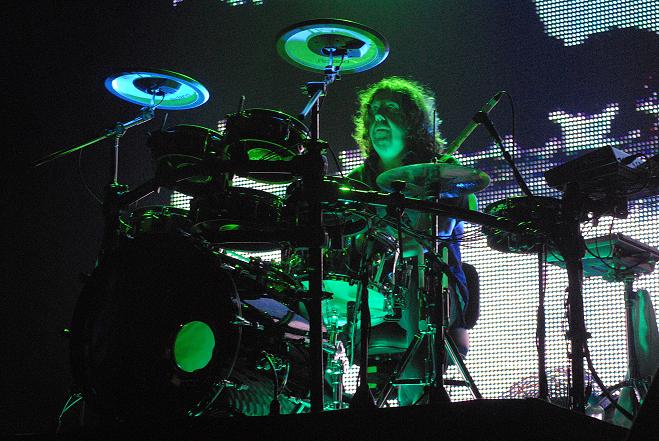
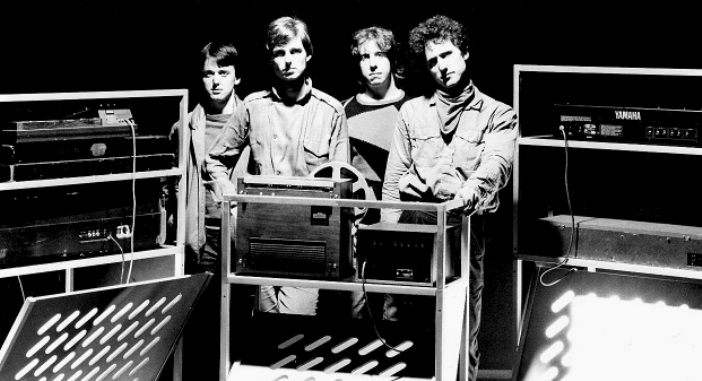
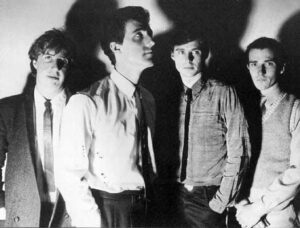
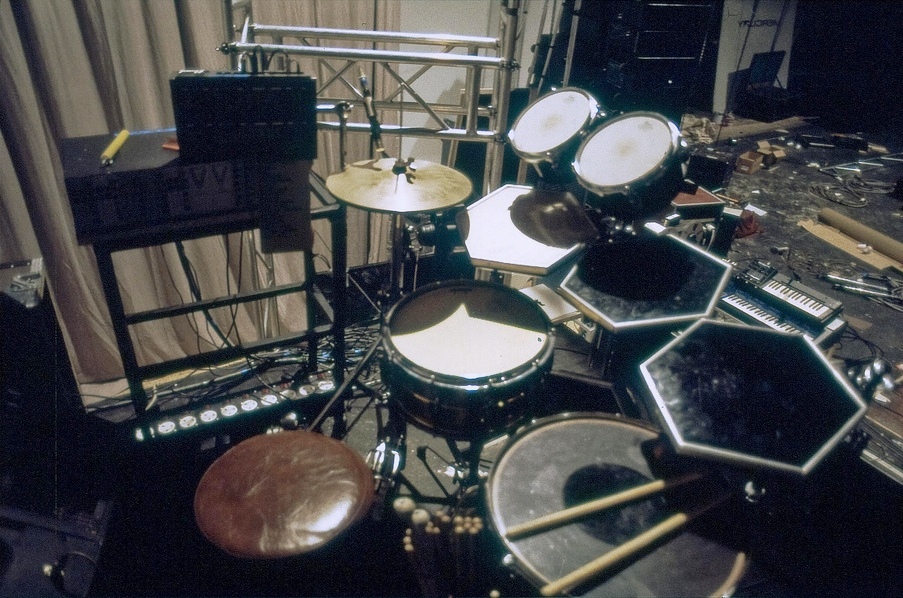
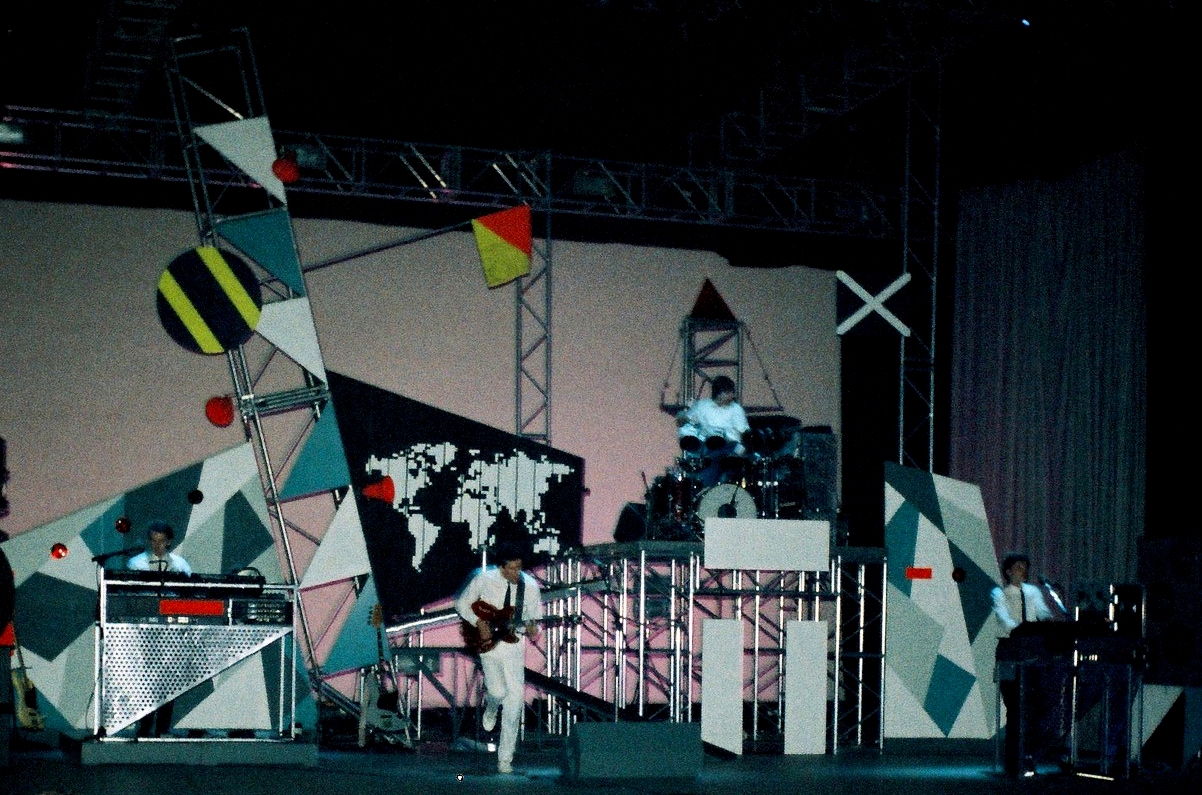
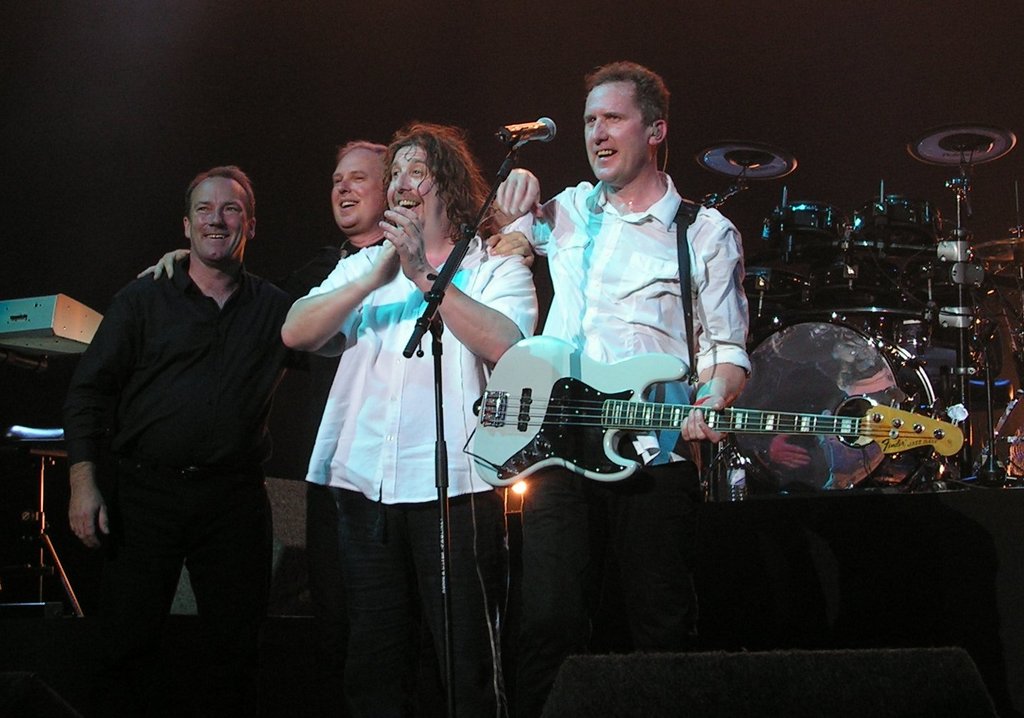

Follow Us!